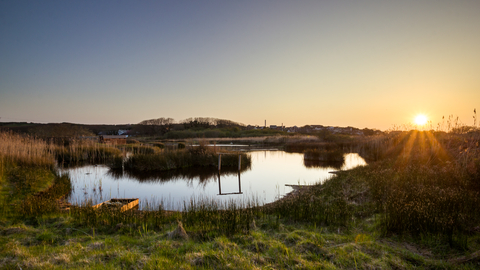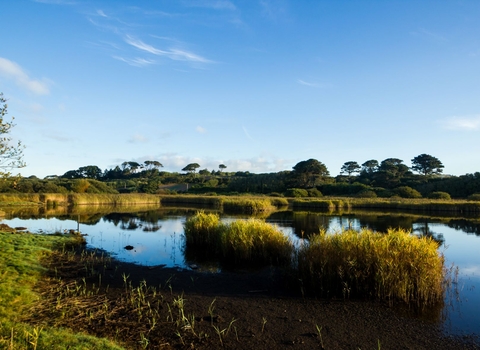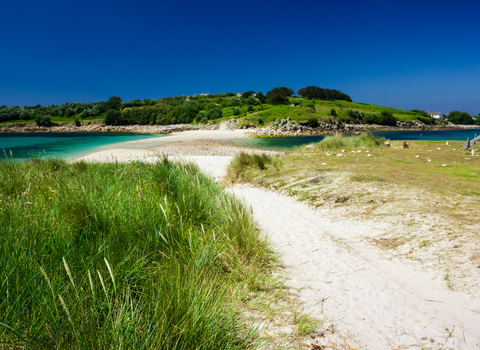Know before you go
Dogs
When to visit
Opening times
Open year roundBest time to visit
Spring & AutumnAbout the reserve
Lower Moors is a beautiful wetland in the heart of St Mary's. Follow the winding path under the trees and within a few feet you'll notice the sound of main road disappear and birdsong take over, especially in the spring. Twisted trees snake out of the water-logged peaty soils and you can spot small birds including warblers, thrushes, tits and sparrows flitting through the leaves. Follow the path to a wooden platform and screen that overlooks Shooter's Pool, or bear right on the path to head towards Old Town. Two bird hides, both on the right-hand side, overlook the biggest pool.
The site is dominated by common reed, with areas of dense and scattered grey willow. There are abundant areas of hemlock water-dropwort, lesser spearwort, marsh bedstraw and small populations of royal and lady fern. At either end of the site, the wet grassland has areas of soft rush and yellow alongside greater bird’s-foot trefoil and ragged robin.
Several small shallow pools make up a network of important feeding areas for passage and overwintering migrants and waders, like snipe, water rail and the diminutive jack snipe. This is a top spot for rare birds that land on St Mary's in spring and autumn; in recent years, the pools have hosted a great blue heron, red-flanked bluetail and bluethroat, as well as purple heron and little bittern. The pools and stream are sometimes home to less common species like corncrake and spotted crake. The woodland areas have hosted rarities, too, including a yellow-billed cuckoo, and overwintering owls sometimes roost deep in the trees.
Approximately 200 years ago a network of ditches were installed to attempt to drain the land, so that the area could be grazed. The site is so flat that drainage was unsuccessful, but the presence of livestock has helped to create a diverse and rich wetland. 100 years ago the management changed. Livestock were removed, the site began to dry out, leaf litter was left undisturbed and scrub began to encroach on the area.
We now manage the site to recreate a healthy wetland ecosystem. We are working towards an ambitious target to remove 2ha of grey willow, along with implementing a 4-year reed cutting programme across a quarter of the site and reintroducing grazing to the wet grassland. This is encouraging wetland plants to thrive, including increases to species like ragged robin, royal fern and southern marsh orchid. The wet grasslands have seen a reduction in common reed, hemlock water-dropwort, sea and soft-rush, and instead purple loosestrife, floating sweet-grass and marsh pennywort are increasing.
Both the wetlands of Lower and Higher Moors play a critical role in the archipelago's water supply, providing essential protection against flooding. We now manage the water levels, enabling the site to remain wetter during the summer months and to improve water levels during the winter. This has also had a positive impact in minimising saltwater intrusion on the site.




